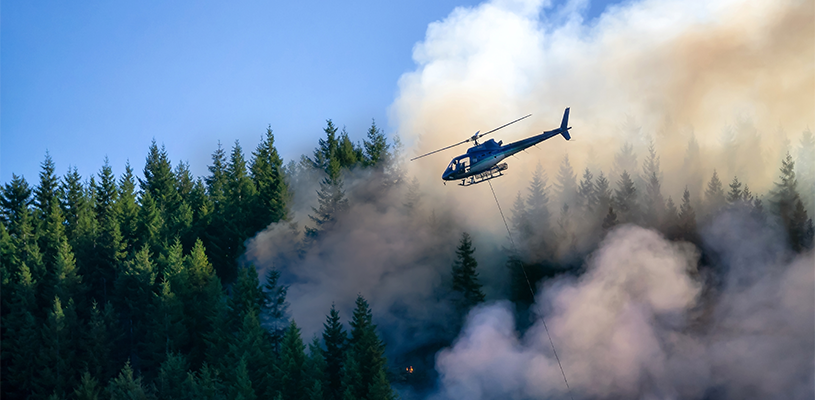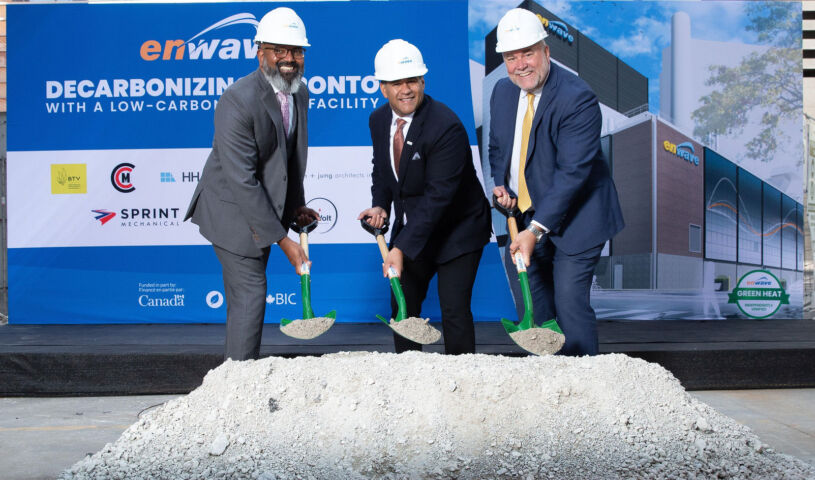Emergency Preparedness: Wildfires, climate change, and resilience

On May 9, four days after 7,000 residents were ordered to evacuate, a wildfire approached Drayton Valley, Alta. According to media reports, rumours started circulating amidst the emergency that it was safe to return to the community. With the fire classified as out of control, at approximately 5,000 hectares, fire services were not ready to discuss re-entry. As of now, Drayton Valley is under a total fire ban, with several evacuation zones in place.
The province of Alberta is experiencing unseasonably dry conditions. More than 100 active wildfires were reported across north and north-central Alberta on May 6. Today (May 10), there are 81 active wildfires, and more than 29,000 people have been evacuated.
According to the Alberta government, the number of wildfires in the province has doubled this year. The five-year average is 166, with about 400 hectares lost to the burning. This year, a little more than 1,000 hectares have been lost so far. Most of the province is under a fire ban until conditions improve, and air quality is expected to be an issue for many days.
The province recently announced Calgary will be opening an evacuee centre. Funding support has also been announced for adults who have been evacuated for at least seven consecutive days, as well as for dependent children under age 18. Evacuees can apply online. If eligible, they will receive an e-transfer to help with accommodations, food, and other basic necessities.
To stay up to date on the wildfires across Alberta, see:
- Wildfire status – https://www.arcgis.com/apps/dashboards/3ffcc2d0ef3e4e0999b0cf8b636defa3
- Emergency alerts – https://www.alberta.ca/alberta-emergency-alert.aspx
- Smoke forecast – https://firesmoke.ca/forecasts/current/
- Air quality – https://airquality.alberta.ca/map/
- Highway closures – https://511.alberta.ca/
There has been an increase in severe wildfires over the past few years. In 2021, two people were killed in the wildfire that destroyed the town of Lytton, B.C. The 2019 Chuckegg Creek, Alta., wildfire lasted 17 months, burning 334,772 hectares.
In the spirit of Emergency Preparedness Week, we’re looking back on some lessons learned from B.C.
The following are a few key excerpts from “Wildfires, climate change, and resilience in BC” (Robin Gregory, Mathieu Bourbonnais, Robert Gray, Municipal World, May 2022).
Three Ways Natural Disturbances Impact Communities
There is a potential link to the heat dome and wildfires from the summer: the heat dome significantly dried the fuels, resulting in intense fires that consumed ground fuels, killed trees, and severely damaged soils that retain water. When heavy rains fell on these areas, they were now heavily prone to erosion and debris flows. The result was severe damage to highways and railroads because burned hillslopes and watersheds could no longer absorb these large quantities of precipitation.
This succession of natural disturbances has had a major impact on the country (e.g., reduced GDP in November due to infrastructure damage) and the province. However, the greatest impacts are felt at the community-level. Three impacts, all linked to the fire, are worth discussing in more detail.
1. Physical and emotional health – The greatest impact on physical health is caused by wildfire smoke and by chronic exposure to elevated levels of particulate matter. Home loss, threat to homes, and evacuations all take an emotional toll on individuals and families and often lead to protracted periods of depression, anxiety, and PTSD as well as increased incidence of domestic violence and substance abuse. As these periods of anxiety increase so does the level of frustration and distrust in the very institutions that we rely on to help mitigate these disasters. And the effects are not borne alone by the public. Increased occurrence, greater magnitude, and longer duration of natural disasters is leading to burn out, PTSD, and suicide in first responders.
2. Economic impacts – Wildfires result in immediate and direct costs to communities and the province. These are largely response costs: crews, heavy equipment, air tankers and helicopters, etc. But indirect and additional costs can be significant and can accrue over many years after the event. At the community level, these costs can be staggering and can cause a significant realignment of municipal budgets. The combination of wildfires and floods in 2021 led to an estimated total cost of more than $20 billion, with a sizable portion having to be paid by municipalities and their residents.
3. Environmental impacts – The summer wildfires have severely damaged mature forests and young plantations that contribute to current and future timber supply. Over the last five years, wildfires have destroyed a significant proportion (over two million hectares) of the provinces’ long-term timber supply. The result will be mill closures, unemployment, worker migration, and reduced municipal taxes – statistics at the provincial or federal level, but heartache and worry for individuals and families. It’s a cascade of socio-economic impacts tied to cumulative environmental damage.
How Do We Get Ahead of These Natural Disasters and Mitigate Their Effects?
Climate change projections suggest that there is a very high likelihood of similar natural disturbance events in the future. They may not occur in succession as they did in 2021, however, they will likely be of higher magnitude, longer duration, and occur more frequently. When it comes to heat domes and atmospheric rivers, all we can do is be prepared to mitigate the effects. This would involve identifying at-risk members of the population and planning for heat-relief measures. Incentives to upgrade the cooling systems of homes would be another tactic.
Wildfire mitigation is dependent on thinking and acting at a very large scale. BC is suffering from too much “bad fire” and not enough “good fire.” The positive impacts of fire in the context of so much damage appears paradoxical, but it isn’t. Under Indigenous stewardship for thousands of years, the steady application of fire resulted in a landscape that was immune to large, damaging fires. Those landscapes had more grassland, shrubland, hardwood forests (aspen, cottonwood, birch), larger riparian areas, and more open forests – all vegetation patterns that slowed or stopped fires. With colonization, livestock grazing, fire suppression, and inappropriate forest management, there is little left of the diverse historical landscape and BC has become highly susceptible to large, destructive wildfires.
To reverse this trend, we need to restore the historic landscape resilience to large, destructive fires. This will require urgent action at very large scales (both in terms of area and volume of biomass), with attention to societal needs and long-term, sustainable solutions that benefit rural communities through an increased tax base and employment, and reduced risk. Climate change projections suggest we have as little as two decades to act if we are to reverse our current trajectory of more destructive fires.
In the absence of action at a meaningful scale and pace, BC will see its forest industry shrink significantly, with all the attendant social and economic ramifications. The province and municipalities will also see an ever-increasing proportion of their annual budgets go to wildfire suppression and the mitigation of wildfire damage. The public will continue to suffer emotionally, physically, and financially.
The $20-billion price tag of the 2021 natural disasters is the cost of inaction. Infrastructure upgrades and wildfire hazard mitigation still need to happen – the disasters of 2021 didn’t reduce or alleviate the need to do this necessary work. And the longer we wait, the more expensive mitigation, response, relief, and recovery all become and the higher the emotional toll on the well-being of residents. MW
✯ Municipal World Executive and Essentials Plus Members: You might also be interested in Robin Gregory, Mathieu Bourbonnais, and Robert Gray’s original article: Wildfires, climate change, and resilience in BC.
Cassidy Meath (they/them) is the Production Editor for Municipal World.
Related resource materials:


